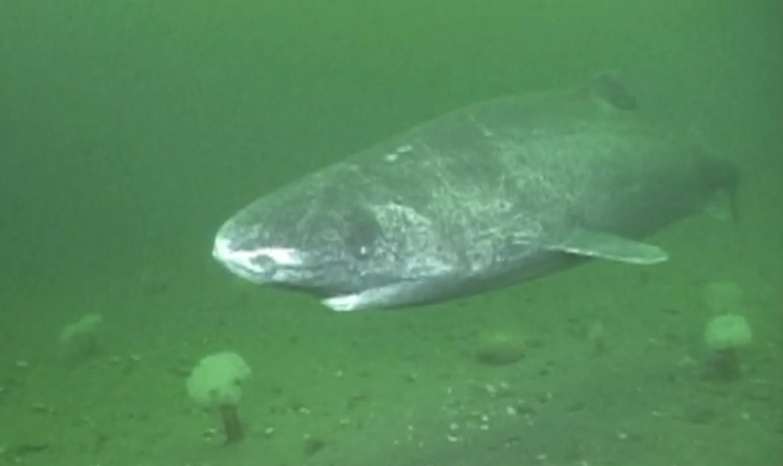Sea's Slowest Sharks Snack on Sleeping Seals

The Greenland sleeper shark has just been tagged the slowest fish in the sea relative to its size, according to a new study that also found the sharks have a sneaky way to still nab live prey — they attack sleeping seals.
The results may explain how these sluggish sharks (Somniosus microcephalus), also called sleeper sharks for their slowness, manage a diet that includes seals. Reports have shown this slowpoke of the Arctic and North Atlantic consumes ringed seals (Pusa hispida), harbor seals (Phoca vitulina), hooded seals (Cystophora cristata) and bearded seals (Erignathus barbatus).
Scientists have known that cold water can slow down fish as it depresses their metabolisms. To find out if the cold waters put the brakes on the Greenland sharks and whether they still have the speed to catch seals, three researchers studied six of the sharks in the waters of Svalbard, Norway. [Gallery: Seals of the World]
They equipped the free-swimming sharks with data-logging tags to measure swim speed and tail-beat frequency, which indicates the speed of contraction of their locomotion muscles that can be slowed down in chilly waters. The average water temperature was 36 degrees Fahrenheit (2.3 degrees Celsius).
They compared the results with about 20 wild fish species weighing 0.4 to 8,600 pounds (0.2 to 3,900 kilograms); the Greenland sharks studied weighed 450 to 756 pounds (204 to 343 kg).
The Greenland sharks showed cruising speeds of about 0.76 miles per hour (0.34 meters per second) and a tail-beat frequency of 0.15 Hertz, both of which were lowest for their size across fish species examined.
The chilly waters may explain the slow tail-beating, the researchers suggest. Sharks and other animals can partially compensate for the slowing effect of cold waters by recruiting more muscle fibers to certain tasks or by having cold-adapted muscle fibers.
Get the world’s most fascinating discoveries delivered straight to your inbox.
However, the fact that Greenland sharks were found to be so slow despite living in Arctic waters suggests the sharks don't seem to fully compensate for the depressing effects of the chill on muscle function.
But perhaps the sharks could rev up some speed when going after a seal meal, but the researchers found this wasn't the case; the sharks' maximum speeds (1.7 mph, or 0.74 m/s) and acceleration during burst swimming were much lower than those of seals.
It's likely the sharks are attacking sleeping seals. Unlike cetaceans, which keep half of their brains alert while the other half "sleeps," seals seem to wholly go to sleep, either at the surface or underwater.
"Arctic seals sleep in water to avoid predation by polar bears Ursus maritimus, which may leave them vulnerable to this cryptic slow-swimming predator," the researchers write in the Journal of Experimental Marine Biology and Ecology.
Follow LiveScience on Twitter @livescience. We're also on Facebook & Google+.
Jeanna Bryner is managing editor of Scientific American. Previously she was editor in chief of Live Science and, prior to that, an editor at Scholastic's Science World magazine. Bryner has an English degree from Salisbury University, a master's degree in biogeochemistry and environmental sciences from the University of Maryland and a graduate science journalism degree from New York University. She has worked as a biologist in Florida, where she monitored wetlands and did field surveys for endangered species, including the gorgeous Florida Scrub Jay. She also received an ocean sciences journalism fellowship from the Woods Hole Oceanographic Institution. She is a firm believer that science is for everyone and that just about everything can be viewed through the lens of science.
